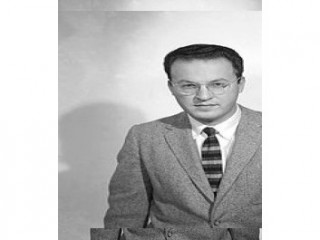
Donald A. Glaser biography
Date of birth : 1926-09-21
Date of death : -
Birthplace : Cleveland, Ohio
Nationality : American
Category : Science and Technology
Last modified : 2011-10-03
Credited as : physicist, bubble chamber, Nobel Prize
0 votes so far
American physicist Donald A. Glaser won the 1960 Nobel Prize for Physics, for his 1952 invention of the bubble chamber. Colloquially described as a pressure cooker with windows, the bubble chamber is a transparent and water-tight case filled with an almost boiling-hot liquid. It is an elegantly simply device which takes advantage of a quick of nature - as charged atomic particles are accelerated by an atom smasher and then beamed through the chamber, the trajectories of ionizing particles' leave a visible trail of bubbles in the liquid. These bubble trails are then photographed, and the pictures are analyzed to allow precise measurement of the paths of subatomic particles.
In his earliest experiments, Glaser used beer as the heated liquid with little success, but his more practical bubble chambers used diethyl ether and liquid hydrogen. Early chambers were a few centimeters in diameter; later chambers exceeded two meters in size, with automated measuring and calculation apparatus. Glaser's invention was for decades second only to the cyclotron in its value to research into electrically charged particles, but the bubble chamber has been largely supplanted by the more advanced systems including multi-wire chambers, drift chambers, and semiconductor radiation detectors.
He has conducted research across a broad spectrum of science, including branching ratios in positive K meson decay, computational modeling of human vision, deoxyribonucleic acid (DNA) synthesis in bacteria, parity violation in non-leptonic hyperon decay, pion-proton scattering, and the value of noise in complicated systems. Since 1964 he has been a professor of neurobiology at the University of California at Berkeley.
Glaser was awarded a Nobel Prize for Physics in 1960 for the invention of the bubble chamber. His invention allowed scientists to observe what happens to high-energy beams from an accelerator, thus paving the way for many important discoveries.
















